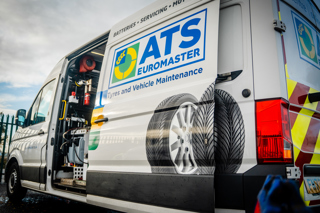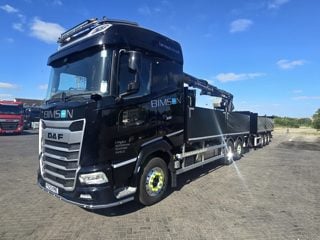Tyre manufacturers are ramping up their new product developments in order to boost ratings under the new tyre labelling scheme.
However, industry feedback suggests that the new scheme, introduced last November, is having little impact on fleet and leasing company purchasing decisions, primarily because they are already choosing the best performing tyres.
Lex Autolease, the UK’s largest leasing company with 268,240 risk fleet vehicles on its books (FN50 figures), told Fleet News that labelling was not influencing the way it was doing business.
“Procuring the best quality tyres has always been of paramount importance to us,” said Ian Thomson, head of fleet operations.
“That said, we welcome the tyre labelling legislation as it has encouraged greater transparency which will help support the fleet industry in improving standards and reducing its impact on the environment.”
Michelin says many more fleets are becoming interested in tyre ratings and they are beginning to influence purchasing decisions, including those made on ‘with maintenance’ contracts by their leasing company providers.
Dave Crinson, Michelin head of fleet, said: “In London, fleets have been particularly concerned with the fuel efficiency category as this has a direct link to vehicles’ CO2 emissions, which is a big issue in the capital.
“There is still a lot more to be done about raising awareness, but it’s encouraging to see tyre labelling starting to have a positive impact on the industry.
Goodyear Dunlop has launched its latest tyre in response to the new labelling legislation which it claims offers not only shorter braking distances, but also saves one litre of fuel for around every 300 miles of motoring.
The new EfficientGrip Performance tyre has been developed after two years of intense research at the Goodyear innovation centre in Luxembourg.
With its BA rating – B for rolling resistance and A for wet grip – the tyre takes the company closer to the ultimate goal of an AA rating.
“The new tyre will replace our EfficientGrip tyre which was rated CB or BB – depending upon size – and could mean a reduction in braking distances of around 5% depending upon conditions,” said Jean-Pierre Jeusette, the general director of the innovation centre.
“That could easily mean a car stopping two to three metres earlier.
“But as well as the safety features, it is the saving in fuel used that we believe will appeal to business users.”
Goodyear Dunlop has already produced some concept tyres rated AA, the highest grading levels obtainable on fuel efficiency and wet grip.
These ultimate rating tyres are, however, specifically designed for research and development purposes and are not yet ready to come to market.
Jeusette said the company wanted to improve them further to ensure they would cover more miles than they are currently able to before putting them on sale.
Asked what would happen to tyre ratings when the AA product was eventually on sale, he said: “It will be like fridges – we will have to go to AA+, then AA++ and so on. But the development work will not stop.”
Hugues Despres, brand director for Goodyear Europe, Middle East and Africa, added: “We believe labelling is a game changer and it will impact how consumers choose their tyres in the future.”
He said: “The tyre label judges us on standards which contribute to enabling a better environment for us all, our ability to deliver a tyre which achieves top marks in tough conditions – namely in wet – and our ability to be environmentally considerate by delivering a tyre that reduces overall fuel consumption of the car, and consequently decreases CO2 generated by the vehicle.”
‘tyres are 20% of your fuel bill’
Tyres account for up to 20% of a car’s fuel efficiency, according to Goodyear Dunlop.
“Every time you consume 10 litres of fuel, two litres are due to the tyres,” said Jean-Pierre Jeusette.
“If you can improve a car’s rolling resistance by one grade – say from C to B – you improve the rolling resistance by 10% to 12%. That would mean you would save 0.2 litres per 100 kilometres – around one litre per 300 miles.
“For cars doing a lot of miles or for businesses running a lot of vehicles, that can be a considerable saving.”
Jeusette said the tyre labelling scheme was particularly important for businesses as running a car with the best rated tyres as opposed to the worst could save around £250 over the life of each tyre.



















Login to comment
Comments
No comments have been made yet.